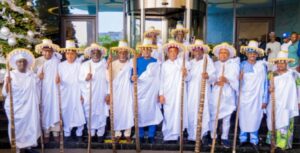



*Pain is a symptom not a disease.
*More common among adult age of 30 – 55 years.
*Human back is composed of a complex structure of muscles ligaments, tendons, disks & bones- the segments of our spine are cushioned with cartilage- like pads.
*Pain in d lower back may be linked to the bony lumbar spine, discs between the vertebrae, ligaments around the spine and discs, spinal cord and nerves, lower back muscles, abdomen and pelvic internal organs and skin around the lumbar area. Pain in the upper back may be due to disorders of tumors in the chest, and spine inflammation.
CAUSES
-LOCALISED
* Disease or injury on the back bones (vertebrae) fracture.
*Degenerative arthritis, a “wear & tear” process that may be related to age, injury & genetic predisposition.
* Cancer of the spine- a tumor located on the spine may press against a nerve, resulting in back pain.
* Cauda equine a syndrome- The cauda equine is a bundle
* Stress; injury or trauma, back sprain or strain; chronic overload of the back muscles caused by obesity; & short term overload of back muscles caused by any unusual stress, such as lifting or pregnancy.
POOR POSTURE
-REFERRED
From The Visceral Organs:
* Kidney stone or kidney infection (pyelonephritis)
* A spinal tumor or cancer that has spread (metastasized) to the spine from elsewhere in the body.
* Infection, which may be in the disk space, bone (osteomyelitis), abdomen, pelvis or bloodstream.
* Sleep disorders.
* Bad mattress.
WHY MORE COMMON IN WOMEN
BECAUSE WOMEN ENGAGED IN SO MANY ACTIVITIES.
***Strained muscles, strained ligaments, muscle spasm(paja paja)
***Lifting or carrying something improperly.
***The result of an abrupt & awkward movement.
***Bending awkwardly & down for long periods.
***Pushing or pulling something
***Twisting.
***Coughing & Sneezing
***Muscle tension & over-stretching.
*** Sitting in a hunched/ long periods without break (e.g when driving, working, cooking).
*** Poor postures.
-SITTING POSTURE
* Qualities of a good seat: Good back support, arm rests, good leg- floor height & a swivel base (for working).
* In sitting: Keep knees & hips level & feet flat on the floor.
* Sit upright with support in the small curve of the back.
* Using a keyboard, make sure elbows are at right- angles & forearms & horizontal.
* Avoiding sitting or standing for extended period of time.
– LIFTING THINGS
*Secret ” leg not back”. Keep back straight, feet apart with one leg slightly forward to maintain balance, bend only at the knees, hold the weight close to the body, and straighten legs while changing the position of back as little as possible.
* Bending back initially is unavoidable, when bending back try not to stoop or squat, tighten stomach muscles so that pelvis is pulled in.
* Lifting object from a squatting position, using hips & your legs to do heavy work.
* Avoid lifting, twisting and bending at the same time.
-DRIVING
It is important to have proper support for your back. Make sure the wing mirrors are properly positioned so you do not need to twist. The pedals should be squarely in front of your feet. If you are on a long journey, have plenty of breaks- get out of the car & walk around.
-BED & SLEEPING
* Bed- You should have a mattress that keeps your spine straight, while at the same time supporting the weight of your shoulders & buttocks. Use a pillow, but not one that forces your neck into steep angle.
* Sleeping ON YOUR SIDE (RIGHT SIDE ) recommended by the prophet or on your back with a pillow under your knees if you can.
-EXERCISES
* Exercising regularly, but stretch before & after.
* Strengthen abdominal muscles, which support lower back. Also, walk or swim regularly strengthen lower back.
By Phisiotherapist Monsurat Agboke












